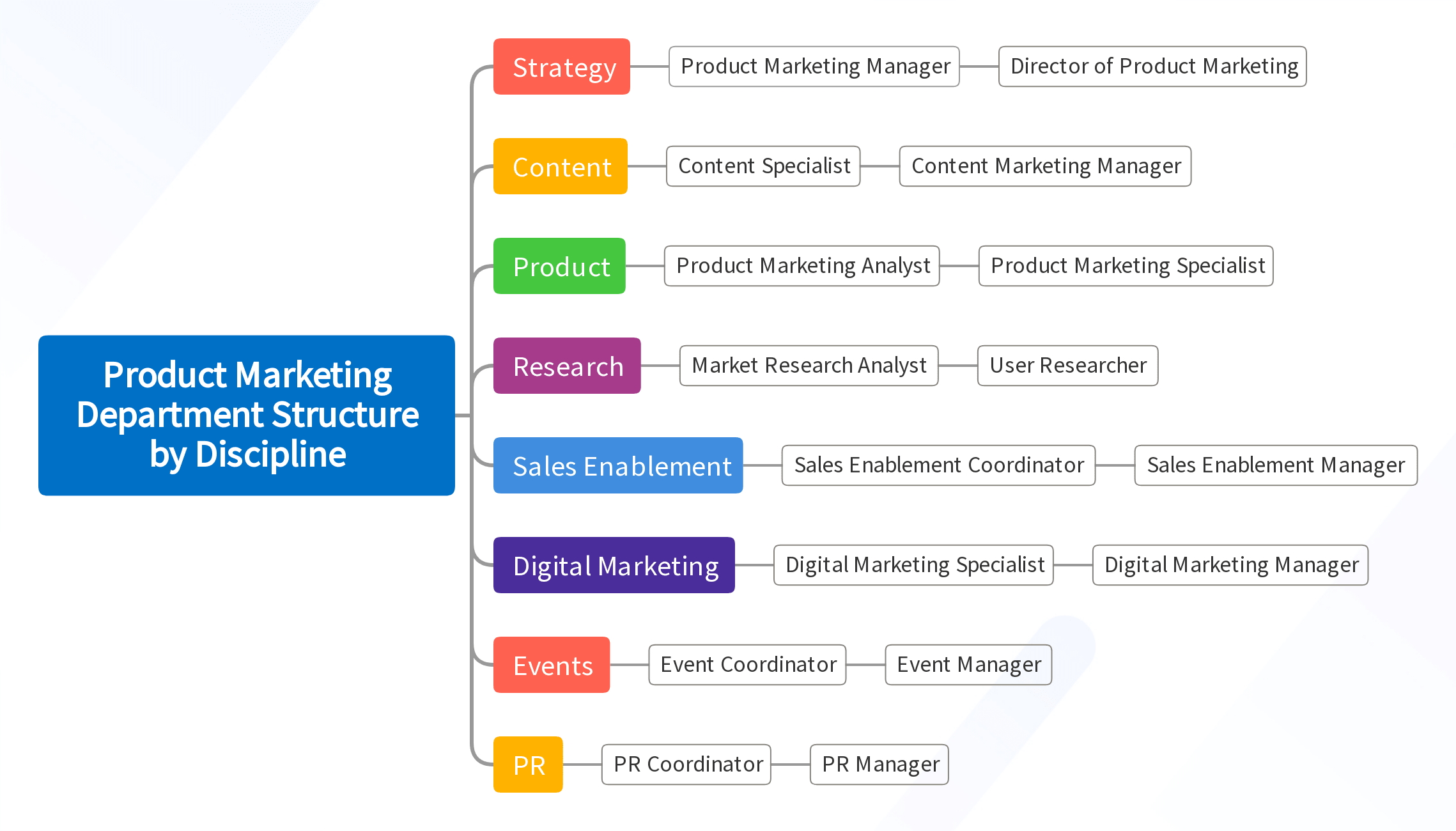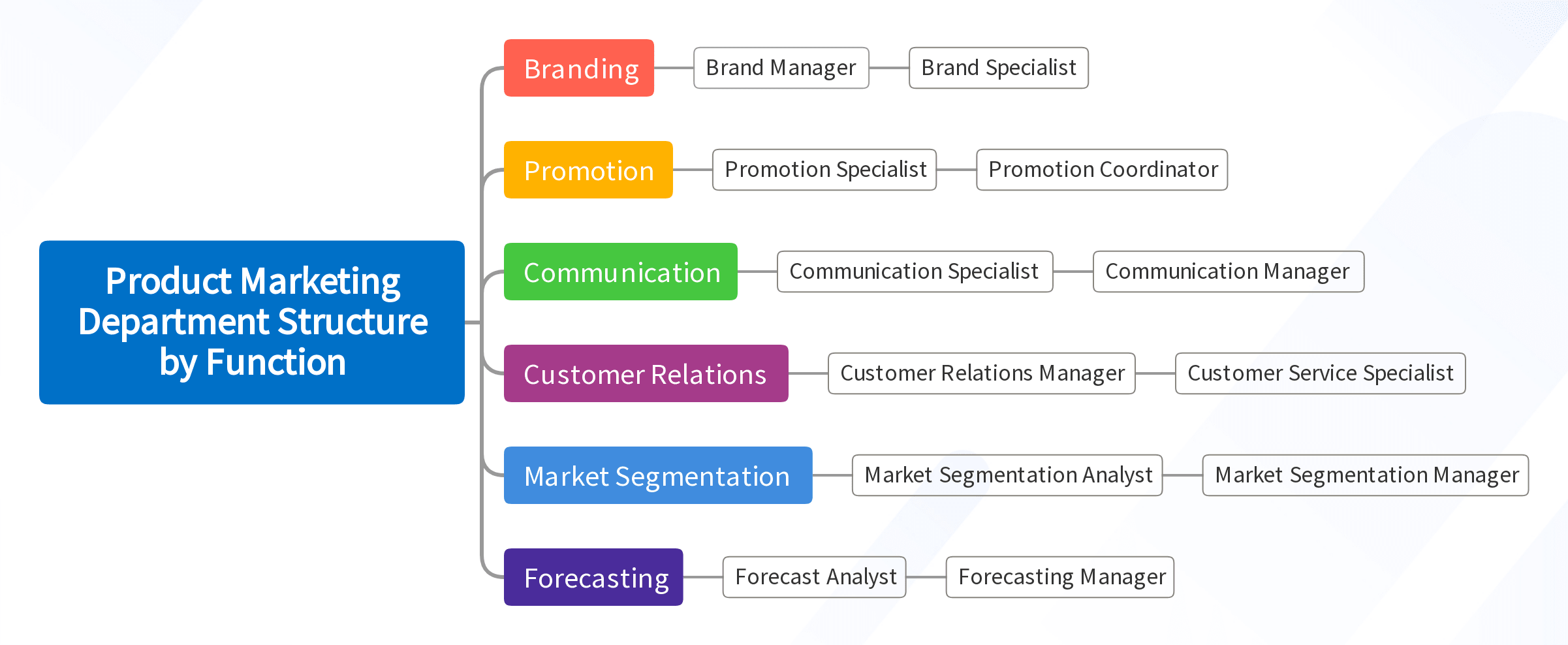

Understanding the structure of a product marketing team is crucial. This team forms the backbone of any business in today’s fast-paced commercial world.
By examining their role, we can grasp how they drive business growth. Their strategies can be a game changer, reshaping the market landscape. I've been running my own successful marketing agency for years so I speak from experience.
But first, let's talk about the Product Marketing department structures you have to choose from.
Best for Growth Marketers
Best for Paid Ads & CMO's
Table of Contents
Structuring Product Marketing Department
There are two main types of department structures based on company size and resources.
- Product Marketing department structure by discipline
- Org Type: Traditional corporate departments
- Best For: Midsize/Enterprise companies
- Product Marketing department structure by function
- Org Type: Employees are grouped by activities and objectives
- Best For: Small to Medium Sized Business (SMB)
Let’s go in-depth to each one of them.
1. Product Marketing Department Structure by Discipline


Discipline-based structure involves building teams centered around various marketing disciplines. For example, SEO, Content, Market Research, and Product Strategy could each form separate teams within a department.
| Discipline | Key Skills | Potential Roles |
|---|---|---|
| Strategy | Market Analysis, Competitive Analysis, Strategic Planning | Product Marketing Manager, Director of Product Marketing |
| Content | Content Creation, SEO, Copywriting | Content Specialist, Content Marketing Manager |
| Product | Product Knowledge, Positioning, Messaging | Product Marketing Analyst, Product Marketing Specialist |
| Research | Market Research, User Research, Analytics | Market Research Analyst, User Researcher |
| Sales Enablement | Sales Training, Collateral Development, Presentation Skills | Sales Enablement Coordinator, Sales Enablement Manager |
| Digital Marketing | Social Media Marketing, Email Marketing, PPC | Digital Marketing Specialist, Digital Marketing Manager |
| Events | Event Planning, Vendor Management, Public Speaking | Event Coordinator, Event Manager |
| PR | Media Relations, Press Release Writing, Crisis Management | PR Coordinator, PR Manager |
2. Product Marketing Department Structure by Function


Another approach is structuring by function, where teams are formed based on the different functions they perform. For example, promotion, launches, and relationship management could all be separate teams.
| Function | Key Skills | Potential Roles |
|---|---|---|
| Branding | Brand Strategy, Creative Thinking, Visual Design | Brand Manager, Brand Specialist |
| Promotion | Promotional Strategies, Campaign Management, Analytics | Promotion Specialist, Promotion Coordinator |
| Communication | Internal Communication, External Communication, Crisis Communication | Communication Specialist, Communication Manager |
| Customer Relations | Customer Service, Relationship Management, Customer Retention | Customer Relations Manager, Customer Service Specialist |
| Market Segmentation | Market Analysis, Segmentation Strategies, Customer Profiling | Market Segmentation Analyst, Market Segmentation Manager |
| Forecasting | Data Analysis, Forecasting Methods, Predictive Modeling | Forecast Analyst, Forecasting Manager |
Product Marketing Team Size versus Business Scale
To achieve successful marketing outcomes, you need to align the team size with your business's scale – a strategic approach that helps optimize resources and drive targeted growth.
| Business Scale | Ideal Department Size | Explanation |
|---|---|---|
| Start-up | 1-3 | Minimal resources, requires multitasking |
| Small-Medium Business | 4-10 | Expanding needs, but still budget conscious |
| Large Enterprise | 10+ | High complexity and diverse product lines |
Factors to Consider When Deciding On a Product Marketing Department Structure
- Business Goals: Understand the overall goals of your business. These objectives will guide the formation of your product marketing team. Whether you aim to expand your customer base, increase sales or enhance brand reputation, your team structure should reflect these goals.
- Product Complexity: Consider the complexity of your product or service. More intricate products may require a larger, more specialized marketing team. Simpler products, on the other hand, may only need a small, but skilled team.
- Market Environment: Analyze your market environment. The volatility, competitiveness, and customer preferences in your market can greatly influence how your product marketing team should be structured.
- Company Size: Take into account the size of your company. Larger companies may need a more hierarchical team structure, while smaller startups might benefit from a more agile, flat structure.
- Resources Availability: Evaluate the resources at your disposal. This includes both financial and human resources. Your budget, along with the skills and abilities of your team, will determine the potential size and expertise of your product marketing team.
Explore other marketing departments:
So, there you have it, a detailed overview of a Product Marketing team structure. From the essence of the team and key roles, to structuring and optimizing; every aspect tailored to achieve success on your business blueprint.


















